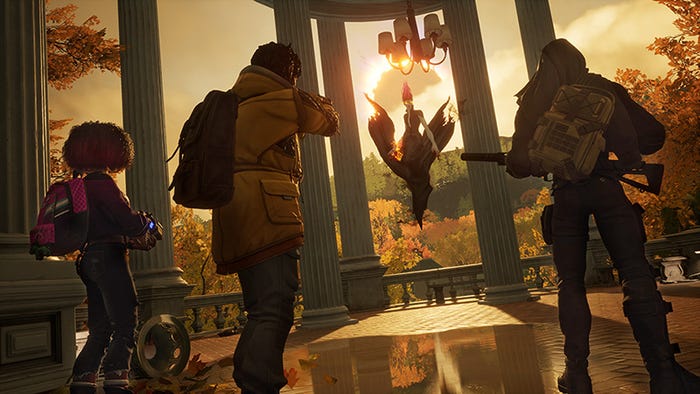When Designers Have Story Problems
It occasionally happens that designers are frustrated by a writer who imposes 'his' story on 'their' level or game design. Here are five reasons why this might happen, and why the writer may not be the guilty party.

I attended a great panel at the Austin GDC where Chris Avellone and Christian Allen (designers) discussed game writing and game design with Andy Walsh and Rhianna Pratchett (writers). It was a good debate with a few barbs on either side, presenting the problems that games developers have dealing with game writers.
However, at one point, I got really annoyed. One of the designers made a comment about the problems they have when the action has to stop so that "the writer's" story can be told at a specific point in the game.
Why was I annoyed? Because either: 1) Your game needs a story, or 2) It does not. If you are in the former situation for whatever reason (the market wants it, the IP has always done it, the producer insists on it, etc.), your job is pretty simple as a designer: Work the story into the game design.
So, let's look at the moment where, in the middle of some exciting gameplay, the designer feels that they are being made to stop the fun part to advance the story (Mary de Marle did a great presentation about this as well at the Austin GDC). Here is why I don't see this as 'writefail:'
1. It is unlikely that the writer suddenly walked in the door, handed the designer a story outline, and said "Change your level design because at this point in the action we have to have a cutscene." What is more likely is that the story documents have been laying around for weeks or months, either halfheartedly skimmed or largely ignored by the design team. In effect, the writer might be saying: "Remember this?"
2. It is equally possible, if designers find themselves in this situation, that the story is something that has been tacked on late in the development process. Not, shall we say, 'best practice.'
3. Story, if done well (and I assume we all want to do things well), is pervasive in a game. The environment, the audio effects, the character designs, the dialog, the level design, the tools or weapons, everything is part of the story. The story is not text and cutscenes; it is atmosphere and NPC actions and quests and marketing and everything else. A designer must know what the story is supposed to be doing in their game, because the story should be everywhere in their game.
4. Also, like the rest of game development, story is collaborative. Writers understand that changes in level design will require story changes; no one expects things to be otherwise. However this cuts both ways; the level design may have to change to accommodate the narrative. Admittedly it is rare, as on a per-hour basis writing is cheaper to change than level design, and it should only happen early in the design process. But it can, has, and will happen.
5. Last but not least, the story is not the writer's story; it is part of the game design. It is the team's story. If there is a sense that the story is some foreign entity infecting the rest of the design process, the whole project has a problem.
The simple fact is that level design and game design cannot be done in a vacuum. Just as the designer's work dictates other parts of the game, there are other parts of the game--like the story--that influence what the designer's limits may be.
It should never happen that story elements parachute down to take the designers by surprise and force them to change their design and their gameplay and generally make their life miserable. That's not 'writefail,' that's 'gamedevelopmentfail.'
Read more about:
BlogsAbout the Author(s)
You May Also Like













